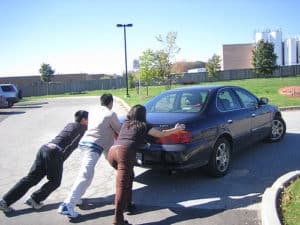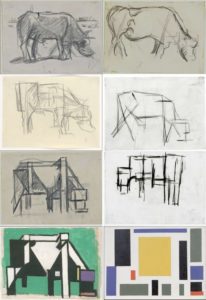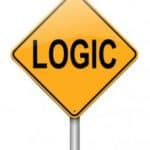In Figure 16.1 three people are faced with the same task. One works diligently on it, another pretends to hang himself with frustration, while the last lays her head down, giving up on the task. Why, given the same situation, do people have different thoughts? Why does everyone respond in a different manner?
What are the sources of our thoughts? Where do the thoughts in our head come from? Why do particular thoughts come up at a particular time?
We get our thoughts from ourselves, our family and friends, the media, spiritual leaders, and other influential figures. Surely that’s right but it doesn’t have much explanatory power.
What determines the march of thoughts as you live your life?
- Current sensations
- Similarity with memories
- Logical alternatives
Current Sensations
If there is an danger of death, your thoughts and attention will be focused of that current situation. Its effect is vastly different on your thoughts than if you are grocery shopping. Your climbing thoughts (Figure 16.2) are focused on each physical movement, nearly to the exclusion of other thoughts. The recollection of earlier happenings, unless they involve climbing, are near zero. All mental effort is directed to solving the climbing challenge.
Later in a grocery store (Figure 16.3), your attention possibly wanders to recent meetings and thoughts about later this evening, barely noticing the cans and details of grocery shelves except for items on your list. Different things are taken for granted when there is no danger in the offing.

Mountain Climber Holding on by one hand over a vertical drop 
Grocery shopping with a list
3S Imperatives in Current Situations
Satiety, sex, and safety must be satisfied in our daily life; however, daily life doesn’t usually demand or allow the complete attention to just one of the imperatives. With our advanced civilization, there are long stretches when we don’t have to act on an immediate worry like starvation or a predator tracking us.
We have behavioral suites (for school, work, eating, shopping, watching TV, and so on) which are responses that satisfy typical, not extreme needs. When the extreme need arises – and it can be pleasurable, like sex after a long abstinence – often our standard behavior is thrown out.
Similarity with Memories

If your child asks to drive the car, your thoughts will probably follow a pattern (Figure 16.4) that is tied to your memory of similar experiences, both your own and those that you have heard about. These thoughts arise unbidden to your attention. The immediate situation is important, but how it relates to your past experiences and your reactions to those situations will often determine your next thoughts and subsequent actions.
Your memory pulls up instances based on similar features, not exact matches. Perhaps the only similarity is your friend’s truck broke down. Although that was twenty-five years ago in a different state and the truck was taken with the mother’s permission, the memory still comes to your thoughts.
Similarity by Abstraction
In Figure 16.5, the stages of abstraction, as envisioned by Theo van Doesburg in his 1917 painting, gives a nice rendering of loss of detail as abstraction is increased. This captures an essence of the abstraction from sensation to mental worldview. In the middle abstractions, we can see that other animals could result in the same figure, perhaps a steer, a horse, a deer, and so on. Remembered situations with a steer or a horse are not the current one, but they may be close enough that your thoughts track the consequences then and consider something similar will follow now.
The abstraction of sensory input, its rearrangement to fit our learned knowledge, and the attachment of emotional weight are discussed in Concept Elevator.
These similarities due to abstraction occur in lower structures (brainstem and limbic system) of the brain and in the nondominant hemisphere.
Logical Alternatives
If the 3S Imperatives do not force an immediate decision. then logical alternatives will arise. In the dominant hemisphere, words reign supreme. With words come logic. The dominant hemisphere also works with the current situation and memories arriving at deductive conclusions rather than inductive similarities. Since Mental Construction is focused on categorization, abstraction, similarities and induction, it assumes the linguistic and deduction operations. Deductive conclusions discusses logic further.
How do the sources of thought affect our thinking? Sensation, similarity, and logic all jump on the concept elevator in our cognitive brain.


